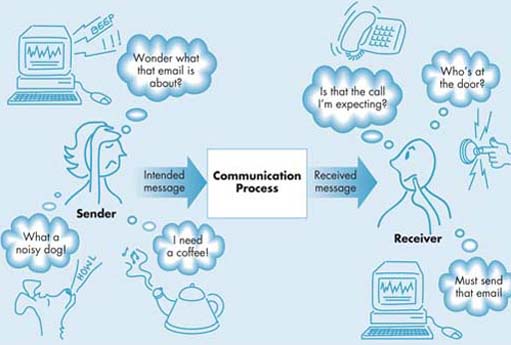The importance of interpersonal skills
Use 'Print preview' to check the number of pages and printer settings.
Print functionality varies between browsers.
Printable page generated Wednesday, 24 April 2024, 4:58 AM
The importance of interpersonal skills
Introduction
Much of what is most important about management is interpersonal, how we deal with others. Awareness of our own and others’ interpersonal skills can help us enormously in dealing with the work tasks we are responsible for.
This course is also available in Welsh on Openlearn Cymru.
This OpenLearn course provides a sample of level 1 study in Business & Management
Tell us what you think! We’d love to hear from you to help us improve our free learning offering through OpenLearn by filling out this short survey.
Learning outcomes
After studying this course, you should be able to:
recognise the importance of interpersonal skills
describe how good communication with other can influence our working relationships
outline the roles we play in our work groups and teams.
1 Communication
The basis of good communication seems very simple, it is speaking or writing clearly such that any message you (the sender) intend to send to someone else (the receiver) is exactly the one which they receive. This means that as well as the detailed content of the message, we have to give some thought to the language we use e.g. ask ourselves if the receiving person might misunderstand any words or phrases we use. We must also be aware of the way we deliver the message – what's known as the medium – e.g. can the message be conveyed by phone or email or does it require a face-to-face meeting with the receiving person?
Yet even when we have thought carefully about these things, achieving successful communication is often rather more difficult than it seems. This is partly because any single message, especially one of many sent and received during a busy working day, can be subject to distractions such as external noises or our thoughts dwelling on other matters. As a result, the sender may not be concentrating fully on the message they are trying to send and the receiver may not be concentrating on the message they are being given. Consider Figure 1, below.

Figure 1
You can see that the individuals in the picture are being distracted both by external noises and their responses to them, and by other tasks they intend to do next. It seems unlikely then in this situation that the received message will end up being the same as the intended message. When we are sending messages to others, we need to check how effective our communication process has been by being open to feedback. In other words, we need to check whether the receiving person's understanding of the message is the same as ours. In face-to-face meetings we could start by observing the facial expressions or body language of the receiver. We could also check whether the receiver has any questions. In written or email communications we could end by including our phone number ‘for further details or questions’.
In terms of your own communication skills, it is important to give just as much of your attention to a message you are receiving as to one you are giving. Listening, for example, as well as being a method for gathering information, can convey your interest in what the other person is concerned with. This in itself can have a positive effect on your relationship with them and, if you are their manager, their motivation. Asking questions for clarification of the detail of the message can also convey that you have understood the message and that you want to respond to it appropriately.
2 Relationships
In reality, a message like the one just referred to above is just one of many which forms part of the ongoing relationships we have with the people we work with. How we get on with each other can have a huge impact on the interpretation of a given message, and the subsequent effects that might have on their motivation or morale.
The next idea we will introduce is a framework for assessing how relationships are established and evolve, based on the states of mind of those involved in it. It is rooted in the work of psychologist, Eric Berne (Figure 2), from an idea proposed in the mid- 1960s. Berne (1966) argued that everyone goes through shifting states of mind – or ‘ego states’ as he called them –based on the circumstances they find themselves in and the responses they have developed over time to these circumstances. There are three basic ego states: parent, adult and child.
Parent state, as the name suggests, is associated with the typical behaviour of a parent towards their children. This could be authoritarian, prescribing or admonishing as in ‘Don't do that’, ‘Do it this way’ or ‘That's wrong’ – which might be described as a critical parent state. Alternatively, it could be sympathetic, protective or cosseting, which might be described as a nurturing parent state.
Adult state is associated with calm, rational, objective behaviour where the individual focuses on gaining better factual understanding of a situation. Someone in this state of mind will tend to ask questions and check their understanding with the other people they are communicating with. They will come across as thoughtful, enquiring and balanced.
Child state, again as the name suggests, is associated with a variety of behaviours which might be thought to be childlike. This time there are three possible types of child state: free child state, which is associated with creativity, spontaneity and fun; rebellious child state, which is associated with hostility, defiance and argument; and adapted child state, which tends to involve displays of compliance, but can also lead to a more instrumental approach to getting a reward.
It may be easy to jump to the conclusion that some of these states of mind are right and others are wrong, but this was not Berne's intention. The main messages of his work are that:
At any given time each of us is in one or other of the states of mind outlined. Sometimes the shift from one state to another can be very rapid.
One person will tend to respond to another's state of mind. For example, if a manager approaches a member of staff in a critical parent mode, the staff member will tend to adopt a child state of mind, becoming perhaps defensive, dependent or argumentative.
Awareness of both our state of mind and the other person's can help to achieve more effective communication and to develop more positive relationships.
3 Roles
Quite often in work situations we are asked to work with a group of people we have not met before and with whom we may seem to have very little in common. The group, which may be labelled a ‘team’, could be tasked to organise or produce something about which some of the members may know more than others. After a period of initial awkwardness perhaps, the group members start to find out more about each other and attend to their task. It is quite likely that each of the members will then tend to settle into (or start playing) a particular role for the group based on a mixture of their skills and character traits. For example, someone might offer to go away and find some essential information, another might draw up a schedule, checklists or an inventory, while another might start to suggest some different ways of tackling the task. There will inevitably be some vying for particular roles, or conflict amongst those members who have differing priorities. A number of management writers have analysed these situations and some have developed sets of descriptions for the typical roles people play in them. One of the most widely quoted of these was developed by UK academic R. Meredith Belbin (1981) (Figure 3). He went on to use this framework successfully in his consultancy work on team-building amongst groups of managers. His view was that in order for a group to become a balanced and effective team, the people within the group must play eight roles between them. These are outlined in Table 1.

| Role type | Description | Characteristics |
|---|---|---|
| Implementer | Likes to get on with the team's task(s) and sort out practical details | Dutiful, practical and quite cautious; predictable and sometimes inflexible |
| Coordinator | Encourages team members to make their point but keeps the team going in the right direction | Calm, self-confident and supportive; does not get involved in matters of detail |
| Shaper | Provides drive and energy to the team's work, but can try to influence it with their own views | Outgoing, dynamic, challenging; impatient and sometimes provocative |
| Plant | Offers lots of imaginative ideas or specialist knowledge to the task | Creative thinker, often unorthodox; likes to work alone and not very practical |
| Resource investigator | Provides lots of information and has lots of useful contacts | Highly communicative, enthusiastic and curious; easily bored |
| Monitor/Evaluator | Likes to observe and measure how well the team are doing | Prudent, hard-headed and a good judge; at times rather unemotional |
| Teamworker | Does things to keep up team spirit or morale | Socially orientated, sensitive and responsive; sometimes indecisive |
| Completer/Finisher | Makes sure that all tasks are finished off completely | Painstaking, orderly, conscientious; can be anxious and find it difficult to ‘let go’ |
It is important to bear in mind that Belbin's roles are not something anyone is born into. They do not mean that, if you spot one or more of the characteristics in yourself or others, you must maintain a certain role. The roles are rather like acting roles in that they can be chosen and played. Indeed, in many groups – of smaller than eight people – some members need to play more than one role, switching between roles according to the needs of the team and the task. Changing roles from time to time is not only possible, but sometimes necessary as we change jobs and teams. Having said this, most people do tend to have a preferred first role, one that they feel most comfortable with. Can you recognise from the descriptions and characteristics in Table 1 which role you would tend to feel comfortable with? Could you manage to play any of the other roles without too much of a problem?
Activity 1
This activity asks you to reflect honestly on your own experiences. In particular, it asks you to consider how some of the ideas you have just read about interpersonal skills may help you to develop a better understanding of your experiences.
Think of a project or an activity in which you worked as part of a group or team. Then do the following tasks:
Write a short paragraph of no more than three sentences briefly describing the project or activity.
Write another short paragraph of no more than three sentences identifying from the descriptions and characteristics in Table 1 which role(s) you played in the activity? Bear in mind that in small groups some people have to play more than one role.
Write another short paragraph of no more than four sentences, commenting on how effective communications were between the members of the group or team and identify any barriers. Bear in mind what you have read about the communications process and interpersonal relationships for this task.
Discussion
In completing Question 2 you may have looked at the boxes headed ‘Characteristics’ in Table 1 to give you an idea of the type of role you may have played. Which of the characteristics most closely match yours? It is likely that you will find your characteristics in more than one box, which indicates that you may have took on more than one role. How about the other members of the group or team? Is there anyone else you clearly recognise from the descriptions and characteristics?
For Question 3 you may have generally agreed that communications were good, or you may remember particular problems. The important thing is to recognise why you think communications were or were not effective, based on what you have read.
4 Supply and demand: Kiran's story
The first six months have just flown by. I've really enjoyed working with the two or three schools that I chose following my conversation with my friend who is a student. I feel that I have established a good reputation for reliability as well as keeping the classes moving forward in their work. My family seems to be coping well with having a mother who goes out to work. Akaash tells his friends that his mother is a teacher as well as a mum and Rohit is now an expert with the microwave!
I do have to admit that I've always liked Longheath School the best and that's been one of my most regular schools. Mrs Jackson has done a superb job since they had an awful Ofsted report, about four years ago now. Lots of parents want their children to go there now, even though it's not in the poshest part of Castletown. She is a very good manager of the school and encourages her staff to develop as managers, too.
When I was last at Longheath, Mrs Jackson asked if I knew that the school was about to advertise a permanent part-time post in health and social care. She also asked me if I would consider applying. You know me, I said that I would have to go home and think about it. But, after talking it over with Rohit, I did apply – and got the job.
I soon realised that being a permanent member of staff would be very different from ‘appearing’ as a supply teacher. There were four other teachers involved in the same area as me, including Anna, the Head of Department. Most of my contact with the team so far has been through Anna, who is very conscientious but a bit disorganised and something of a worrier. The others, as I found, are all very different. There is Julie, who is full of ideas and enthusiasm for her job but seems to have a new interest every time you talk to her. Then there is Edith, who is very practically minded and helpful but tends to have very fixed views. And finally there is Ray, the other part-timer, who is a sensitive soul with a lot of time for people – so much so he tends to be late for everything. I must admit, I do wonder sometimes how they all get on.
Activity 2
Write a short paragraph of at least four sentences to answer the following question:
If Kiran were to turn to you for advice about working within a team, what ideas from this course could you use to help her?
Discussion
This is a useful activity for reviewing your understanding of the ideas in this course about interpersonal skills. For example, Kiran could develop a better understanding of the team she is now part of and the role(s) she might play in it, following Belbin's definition of team roles. Alternatively, she could start to gain a better understanding of the relationships the group has already established amongst themselves by using Berne's ideas on ego states. There may be some clues to the roles and relationships of the team members in the final paragraph of the case study.
Conclusion
This free course provided an introduction to studying Business & Management. It took you through a series of exercises designed to develop your approach to study and learning at a distance, and helped to improve your confidence as an independent learner.
Acknowledgements
Course image: Farid Iqbal Ibrahim in Flickr made available under Creative Commons Attribution-NonCommercial-ShareAlike 2.0 Licence.
The content acknowledged below is Proprietary (see terms and conditions)>and is used under licence and is made available under a Creative Commons Attribution-NonCommercial-ShareAlike 4.0 Licence>
Figure 2 Photograph published with permission of the International Transactional Analysis Association
Figure 3 Reproduced by kind permission of Belbin Associates, www.belbin.com
Courtesy of iirraa
Don't miss out:
If reading this text has inspired you to learn more, you may be interested in joining the millions of people who discover our free learning resources and qualifications by visiting The Open University - www.open.edu/ openlearn/ free-courses
Copyright © 2016 The Open University
